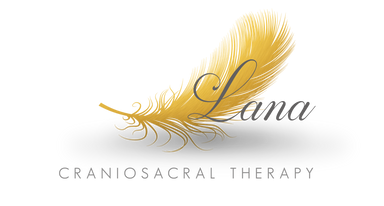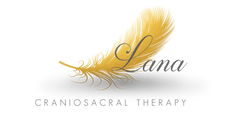
What is CranioSacral Therapy?
Cranio-Sacral Therapy is a gentle yet powerful hands-on therapy for Adults, Children & Toddlers. This therapy does not use any manipulation.
The therapist listens to your mind-body system to assess a broad spectrum of conditions, using a skilled light touch to encourage the body to heal itself.
Within the secure environment, you will be heard and respected as an individual, creating an opportunity to restore health to body and mind.
During the session, you will be supported in a comfortable and friendly space and settle into deep relaxation.
Our bodies are always trying to maintain an optimal level of health, but on occasion, perhaps because of emotional or physical trauma, lowered immunity, and other factors, it gets stuck and needs assistance to free up its healing potential. Craniosacral therapy does exactly that, in a gentle non-invasive way.
Craniosacral Therapy has evolved from Cranial Osteopathy.
As with many holistic therapies, CST has affinities with other ancient healing practices.
It is also excellent for babies and mothers, especially after the birth process. It helps the baby to settle, helping with issues such as colic, restless sleep, and persistent crying. It is also a great help with Pelvic issues.
CranioSacral Therapy (CST) releases tensions deep in the body to relieve pain and dysfunction and improve whole-body health and performance. It was pioneered and developed by Osteopathic Physician John E. Upledger after years of clinical testing and research at Michigan State University where he served as professor of biomechanics.
Using a soft touch which is generally no greater than 5 grams - about the weight of a nickel - practitioners release restrictions in the soft tissues that surround the central nervous system. CST is increasingly used as a preventive health measure for its ability to bolster resistance to disease, and it's effective for a wide range of medical problems associated with pain and dysfunction
How does CranioSacral Therapy Work?
Few structures have as much influence over the body's ability to function properly as the brain and spinal cord that make up the central nervous system. And, the central nervous system is heavily influenced by the craniosacral system of the membranes and fluid that surround, protect and nourish the brain and spinal cord.
Every day your body endures stresses and strains that it must work to compensate for. Unfortunately, these changes often cause body tissues to tighten and distort the craniosacral system. These distortions can then cause tension to form around the brain and spinal cord resulting in restrictions. This can create a barrier to the healthy performance of the central nervous system, and potentially every other system it interacts with.
Fortunately, such restrictions can be detected and corrected using simple methods of touch. With a light touch, the CST practitioner uses his or her hands to evaluate the craniosacral system by gently feeling various locations of the body to test for the ease of motion and rhythm of the cerebrospinal fluid pulsing around the brain and spinal cord. Soft-touch techniques are then used to release restrictions in any tissues influencing the craniosacral system.
By normalizing the environment around the brain and spinal cord and enhancing the body's ability to self-correct, CranioSacral Therapy is able to alleviate a wide variety of dysfunctions, from chronic pain and sports injuries to stroke and neurological impairment.

When was CranioSacral Therapy developed?
It was in 1970, during a neck surgery in which he was assisting, that osteopathic physician John E. Upledger first observed the rhythmic movement of what would be soon identified as the craniosacral system. None of his colleagues nor any of the medical texts at the time could explain this discovery, however.
His curiosity piqued, Dr. Upledger began searching for the answer. He started with the research of Dr. William Sutherland, the father of cranial osteopathy. For some 10 years beginning in the early 1900s, Sutherland had explored the concept that the bones of the skull were structures to allow for movement. For decades afterwards, this theory remained at odds with the beliefs of scientific and medical communities. Dr. Upledger believed, however, that if Sutherland's theory of cranial movement was, in fact, true, this would help explain, and make feasible, the existence of the rhythm he had encountered in surgery.
It was at this point that Dr. Upledger set out to scientifically confirm the existence of cranial bone motion. From 1975 to 1983 he served as a clinical researcher and Professor of Biomechanics at Michigan State University, where he supervised a team of anatomists, physiologists, biophysicists and bioengineers in research and testing. The results not only confirmed Sutherland's theory but led to clarification of the mechanisms behind this motion - the craniosacral system. Dr Upledger's continued work in the field ultimately resulted in his development of CranioSacral Therapy.

Important Medical Advice:
Craniosacral Therapy is intended to complement, not replace, the relationship you have with your medical practitioner. If you have or suspect you may have, a health problem please see your doctor. Never disregard medical advice or delay in seeking it, because of anything you have read on this website.
People found Craniosacral therapy helpful for the following conditions :
-Asthma and allergies.
- Back pain, sciatica, spinal.
-Frozen shoulder
-Muscular aches and sprains
-Birth trauma, for the baby and the mother
Child behavioral problems, such as hyperactivity and ADHD ( attention deficit hyperactivity disorder)
-Colic
-Digestive problems
-Gynaecological conditions, such as heavy or painful periods
-Hedeches and migraines
-Insomnia
-Nervous disorders
-Sinusitis
-Post dental trauma, temporomandibular and jaw disorders
-Postoperative conditions
-Stress-related conditions
-Tiredness and exhaustion


